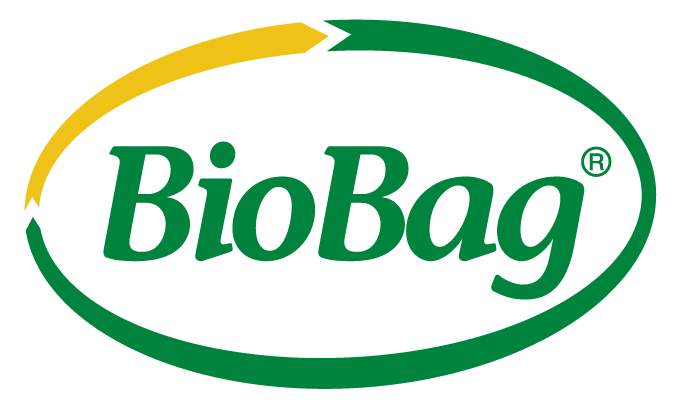Below is our Top 6 most Frequently Asked Questions (FAQs). If you have one that hasn’t been answered below or want more detail, please contact us! We love chatting about our amazing products and answering all kinds of questions! Believe me, we’ve had some doozies in our day!
What are BioBags made from?
The short answer:
BioBags are made from a resin derived from plants, vegetable oils and compostable polymers.
The more detailed answer:
BioBag® products are made from a compostable resin named Mater-Bi®. Mater-Bi® is produced by Novamont, an Italian research company dedicated to environmental alternatives to polyethylene-based plastics. Mater-Bi® is an innovative family of bioplastics that uses substances obtained from plants, such as but not limited to, non-genetically modified corn starch, and biodegradable/compostable polymers obtained both from renewable raw materials and fossil raw materials. Novamont’s policy is to acquire and use exclusively natural, non-GM, raw materials (such as starch). Most of our products (3 gallon, 13 gallon, sandwich bags, produce bags and liners) have a non-GMO third party certification. To read more about Mater-Bi®, visit Novamont’s website.
Where are BioBags made?
The majority of BioBags are Manufactured in the USA with resin (mentioned above) sourced from Italy. More specifically, we create the glorious BioBag in a magical place called San Leandro, California! A few of our products are manufactured in Thailand and Estonia.
Where can I purchase BioBags?
We don’t sell directly to consumers but BioBags can be easily purchased online and at many natural and traditional retailers. To find some of those retailers, see our How to Order page. If you are a wholesaler, distributor, non-profit, government entity or any other business organization and would like to purchase BioBags, contact us directly for pricing and to set up an account. We only have one case minimums and our customer service is unparalleled!
I see your bags are labeled “COMPOSTABLE”. What does that mean and what is the difference between Compostable and Biodegradable?
We are SO glad you asked this question.
The short answer:
BioBags are certified compostable meaning they can be consumed by micro-organisms in an industrial setting and meet the testing specifications found in the ASTM D6400. Our bags are digested by these microbial bacteria, along with food and yard waste, to become soil or fertilizer. Some of our products are even home compost certified (European) and can be composted in your home composter. Pretty neat, huh?
The more detailed answer:
Check out our whole web page dedicated to the difference between compostable and biodegradable along with our certifications.
How is a BioBag Compostable bag different from a traditional polyethylene plastic bag?
A BioBag is not meant to last forever. It is meant to collect organic waste and be turned into compost along with that organic waste. Because a BioBag is not made of polyethylene, the bag can start to break down when exposed to microorganisms that are found in the ground and on organic waste.
For best results:
- Use within one year of purchase
- Store in a cool, dry place away from excessive heat. Try the fridge or freezer. Those work great for us in the office!
- Change out your used BioBag every 3-5 days
What happens to BioBags in the landfill?
The short answer:
Like ALL things (including food waste, paper and all else), Virtually Nothing.
The more detailed answer:
BioBags are designed to be composted and returned naturally back to the earth. If BioBags are placed in an “open” or “turned” space like a compost facility they will decompose at a rate similar to other biodegradable materials in the same setting. If BioBags are placed in an anaerobic (air-locked) landfill and deprived of oxygen and the existence of the micro-organisms that “eat” naturally biodegradable materials, their ability to decompose will be severely restricted. This is true of all biodegradable materials placed in this setting, including paper, yard waste, and food waste. The majority of landfills in the U.S. are modern anaerobic (air-locked) landfills.
These modern landfills are designed to safely entomb waste and to protect the environment from the liquids and gases that are produced during the very slow breakdown of waste. The impediment of degradation is because the lack of exposure to air, water and sunlight which is needed for degradation. Therefore, by design, modern landfills greatly retard the degradation process to reduce the by-products that might otherwise contaminate groundwater and the air. They are also specially designed so that the land can be used after the landfill is capped and closed. Parks, golf courses and even airports have been built on top of closed landfills!
As a consumer, you should be quite suspicious of any manufacturer making claims that their products will biodegrade, degrade or “go away” quickly in a landfill. There are many Federal and State Regulations preventing false claims such as these.

